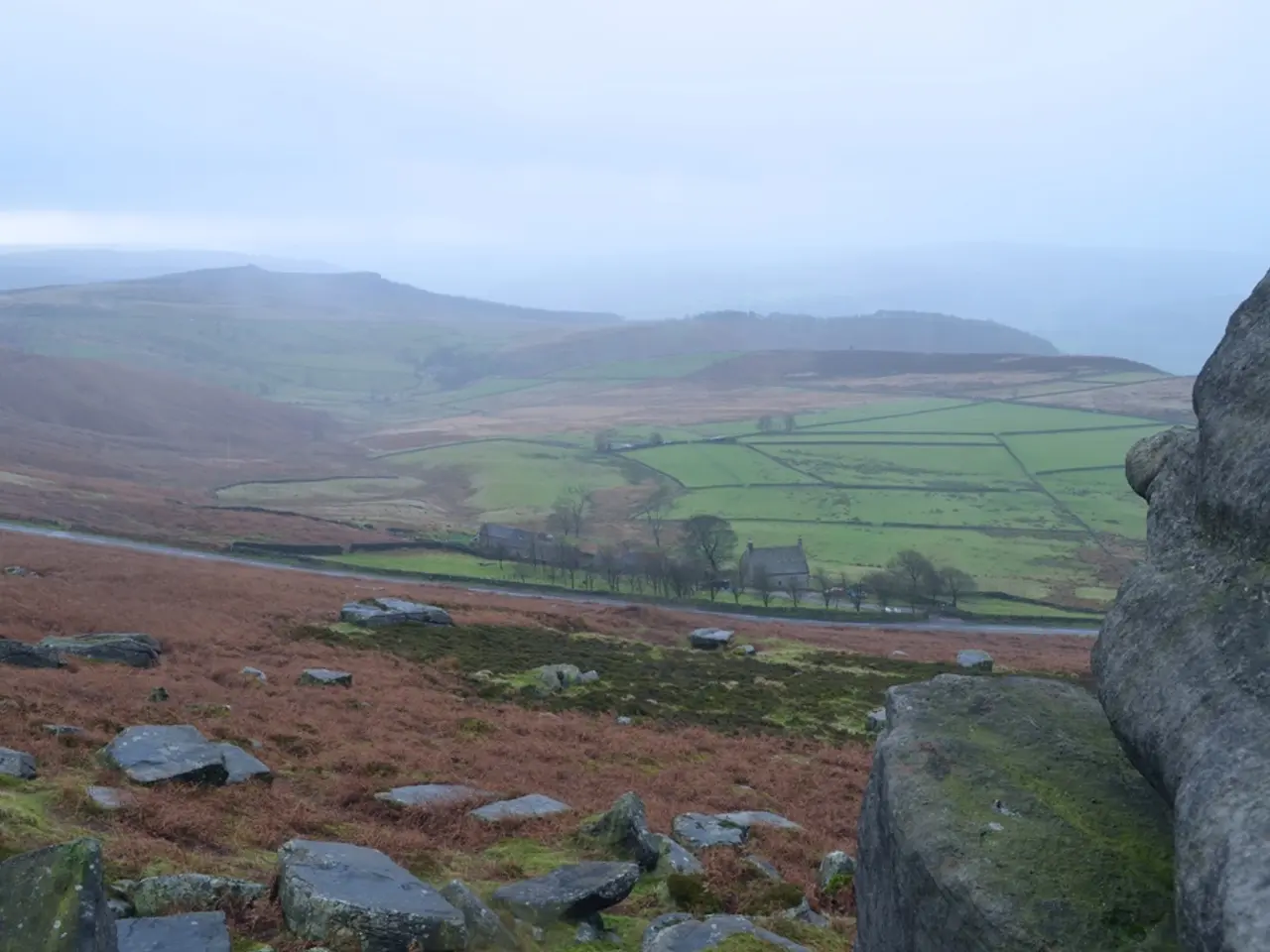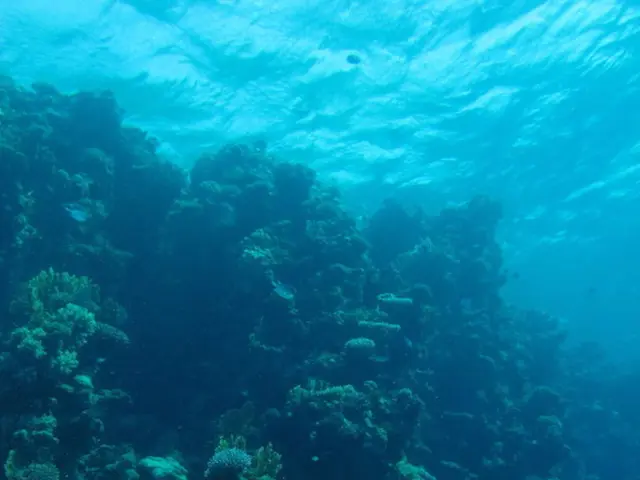Economic Boost and Environmental Threat: The Ambiguous Role of Tourism in Wealth creation and Ecosystem Destruction
Hawaii, a tropical paradise renowned for its pristine beaches and vibrant marine life, is grappling with the impact of tourism on its fragile ecosystems and cultural sites. The archipelago, which depends on tourism for about 25% of its economy, is taking proactive measures to address the environmental pressures posed by visitor numbers.
One of the key concerns is the degradation of ecosystems. At popular snorkeling spots like Shark's Cove on Oahu's North Shore, increased foot traffic can harm delicate marine life. Meanwhile, hiking at sites like Diamond Head risks trail erosion and litter accumulation. Overcrowding also contributes to the creation of visitor-made trails, which can be destructive to the existing ecosystem and wildlife within the parks.
Tourism's impact extends to cultural sites as well. Both Shark's Cove and Diamond Head hold significant cultural value to Native Hawaiians, and unregulated tourism can erode cultural values and respect for these sacred places.
In response, Hawaii is implementing the "green fee" (climate impact fee) on tourists to generate $100 million annually for conservation efforts. This includes invasive species control, habitat restoration, and community empowerment to manage tourism impacts locally. The state is also promoting ecotourism practices that emphasize responsible visitation, protection of natural and cultural heritage, and education of tourists on sustainable behaviors.
Furthermore, visitor management strategies are being planned, such as reducing cruise ship arrivals to limit pollution and overcrowding, and encouraging higher-spending but lower-volume tourism to reduce environmental strain.
Elsewhere, Aruba, where tourism provides 57% of the country's gross domestic product, faces similar challenges. Excessive snorkeling can cause damage to coral reefs, and the chemicals in sunscreen, such as oxybenzone and octinoxate, contribute to coral bleaching. In an effort to combat these issues, the government is taking steps to limit sunscreen pollution and promote responsible tourism practices.
In recent times, Hawaii has faced another challenge in the form of wildfires. The town of Lahaina on Maui saw over 100 deaths, 2,000 destroyed homes, and six billion dollars in damages in August 2023. Despite this, Maui reopened to tourists only two months after the wildfires, causing controversy among locals who called for a pause to tourism, displaying signs like "Let Lahaina heal" and "Lahaina is not for sale."
While the recovery of marine life during the COVID-19 pandemic-induced tourism halt offers hope, it also underscores the delicate balance between tourism and environmental preservation. As Hawaii and other tourist destinations continue to navigate this balance, the importance of responsible tourism practices and community engagement in conservation efforts becomes increasingly evident.
References:
- Hawaii Tourism Authority. (2023). Hawaii's Green Fee: A Step Towards Sustainable Tourism. Retrieved from https://www.hawaiitourismauthority.org/green-fee/
- Malama Pupukea Waimea. (2023). Protecting Hawaii's Natural and Cultural Resources. Retrieved from https://malamapupukeawaimea.org/
- National Park Service. (2023). Managing Tourism at U.S. National Parks. Retrieved from https://www.nps.gov/subjects/tourism/index.htm
- State of Hawaii. (2023). Hawaii's Visitor Management Strategies. Retrieved from https://dlnr.hawaii.gov/doh/hawaii-visitor-management-strategies/
- Yagodich, J. (2023). Sustainable Tourism Practices in Hawaii. Retrieved from https://malamapupukeawaimea.org/sustainable-tourism/
- National Oceanic and Atmospheric Administration. (2023). Coral Bleaching and Its Impact on Hawaii's Reefs. Retrieved from https://www.noaa.gov/coral-bleaching
- Hawaii Department of Land and Natural Resources. (2023). Sunscreen Regulations in Hawaii. Retrieved from https://dlnr.hawaii.gov/doh/sunscreen-regulations/
- Hawaii Tourism Authority. (2023). Hawaii's Economic Impact from Tourism. Retrieved from https://www.hawaiitourismauthority.org/economic-impact/
- Hawaii News Now. (2023). Maui Reopens to Tourism Amidst Controversy. Retrieved from https://www.hawaiinewsnow.com/story/46414865/maui-reopens-to-tourism-amidst-controversy
- Aruba Tourism Authority. (2023). The Importance of Aloe Vera to Aruba's Cultural Identity. Retrieved from https://www.aruba.com/discover/culture/aloe-vera
- Byodo-In Temple. (2023). A Symbol of Hawaii's Diverse Culture. Retrieved from https://www.byodointemple.org/
- Maya Bay. (2023). The Recovery of Maya Bay During Its Closure. Retrieved from https://www.maya-bay.com/
- National Park Service. (2022). Record-Breaking Visits to U.S. National Parks. Retrieved from https://www.nps.gov/subjects/tourism/index.htm
- Ocean Conservancy. (2023). The Impact of Sunscreen on Coral Reefs. Retrieved from https://oceanconservancy.org/trash-free-seas/plastics/sunscreen/
- National Park Service. (2023). Wildlife Disturbance and Trespassing on Fragile Lands. Retrieved from https://www.nps.gov/subjects/tourism/wildlife-disturbance.htm
Read also:
- Most Effective Fence Line Weed Killers of 2025: Optimal Options for Sturdy Border Vegetation Management
- Recognizing Excessive Negativity in Your Circle: Identifying and Managing Pessimistic Individuals
- Struggling with weight loss despite persistent efforts?
- Foreign Travel Warnings: Russian Tourists Risk Dangerous Consequences by Trying this Overseas






